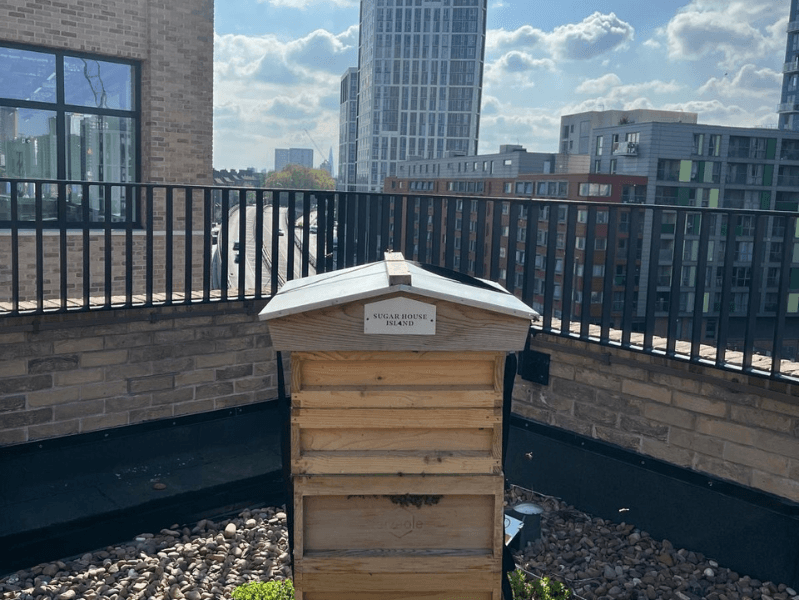
ROOFTOP BUZZ: SUGAR HOUSE ISLAND’S VERY OWN BEES THRIVE ON THE TYPE BUILDING
In celebration of Bees’ Needs Week, we took a moment to shine a spotlight on Sugar House Island’s smallest but hardest working residents. Our rooftop bees!
Perched atop the Type Building on Chimney Walk, these bees are lovingly cared for by Gus from urban beekeeping experts Alvéole. During his recent visit to harvest this season’s honey, Gus shared a few insights into what bees really need to thrive and why Sugar House Island is helping to meet those needs.
- Habitat is key
With 270 bee species in the UK (and around half of those found right here in London!), having suitable nesting spaces is crucial. While honey bees prefer hollow trees, other species seek out underground nooks or purpose-built homes like our onsite insect hotel.
- Food is fuel
Bees rely on flowers not just for beauty, but survival. Nectar provides them with carbohydrates (their energy source), and pollen supplies protein. It’s this nectar that eventually becomes the delicious honey we’re lucky to enjoy.
Last week, Gus removed the season’s excess honey frames, which will soon be spun, jarred, and returned to SHI. Truly hyper-local honey at its finest.
Some additional honey harvesting facts:
- Each bee will produce about 1/8 teaspoon of honey in its entire lifetime.
- Each honey is a reflection of the ecosystem that surrounds the hive where it was produced, encompassing all the flavours from all the flowers visited by the bees.
- Bees fly the equivalent of four times the earth’s circumference to produce one kilogram of honey.
- Bees visit up to 4,500,000 flowers to produce every kilogram of honey.